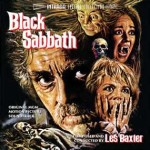The Italian version of Black Sabbath was released as something called I Tre Volti Della Paura, which – literally translated – means The Three Faces of Fear. True to form, Mario Bava’s triple-feature presents three separate works of horror, each of which maintains some eery similarity to the others. All three involve the undead (at least in the American version), all three involve revenge, and all three are highly indicative of the Hitchcockian belief that a slow-ticking suitcase will almost always trump the exploding bomb.
The American Black Sabbath swaps the order of the Italian original, placing the two most similar features back-to-back. This creates an odd mirror effect, allowing the audience to pick up on various cues (i.e., two films, two single women who live alone in a small apartment, both of whom are interrupted by an unexpected phone call, both of whom eventually find themselves struggling just to make it through the night, both of whom have good reason to fear retribution from the dead).
In terms of modern cinema, most of the mechanisms Bava uses in Black Sabbath have since been rendered antiquated, if not wholly obsolete. You’ve got tumbleweed and nickelodeon filters; you’ve got weak dialogue (e.g., “It’s as if she’d been frightened to death!”) set along some creepy discourse (“What’s the matter with you, woman? Can I not fondle my own grandson?”). And yet, this is precisely the type of thing that happens to all great cinema over time. This is how cliches become cliches, for lack of any better way of putting it. Time – and time alone – is enough to reduce even the best ideas into suey.
Despite that, Black Sabbath has managed to find its own freak niche over the years, thanks in large part to Ozzy Osbourne, Quentin Tarantino, and the Coen Brothers (among others). The film is certainly an odd, if-not-fascinating detour for anyone who has interest in such things. In fact, it may even be of interest to casual fans of Boris Karloff (This despite the fact Karloff looks and sounds more like an aging Vonnegut in this film).
Beyond that, the problem is not so much that Black Sabbath wasn’t a decent horror film in its heyday as it is that people have just kind of gotten beyond that whole thing (i.e., the creature-double-feature, etc.). To convince an average viewer to sit still for 95 minutes while watching aging cinema like this would be to convince him or her that there was literally nothing else on TV, which may very well be true, but doesn’t make persuasion any easier.
(Black Sabbath is currently streaming via

